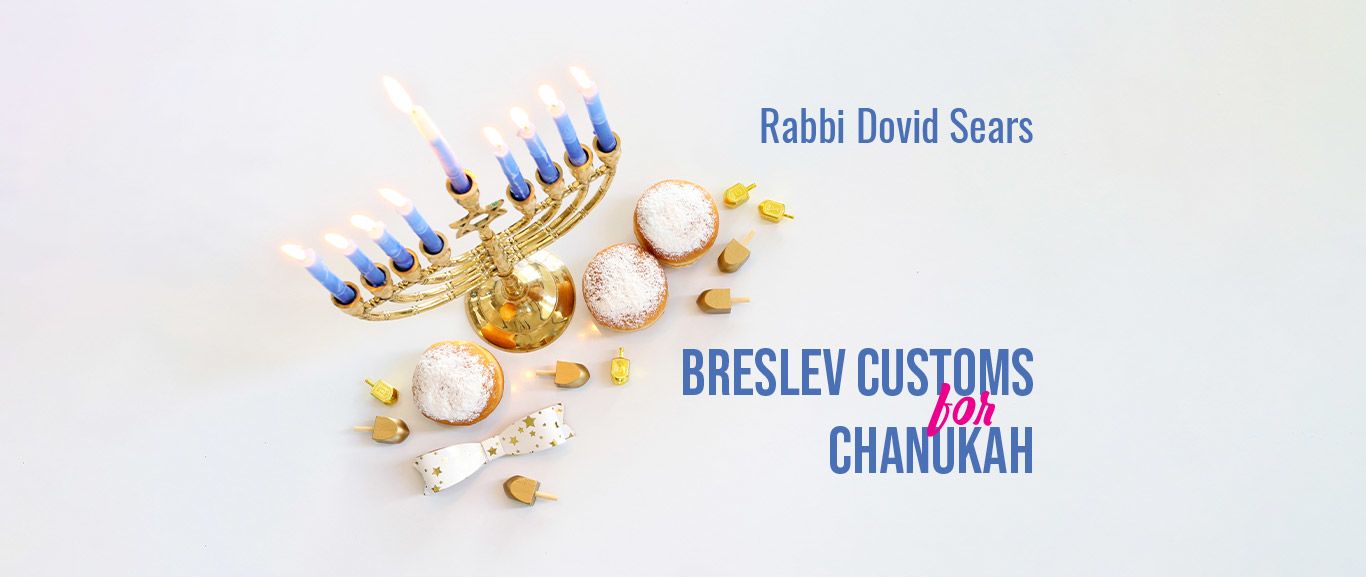
Breslev Customs for Chanukah
Breslev customs and their meaning for Chanukah, Zot Chanukah, and Nittel Nacht (Xmas eve).

Introduction
Rebbe Nachman states: “Through the mitzvah of the Chanukah lights, we come to recognize God’s Glory, which is elevated and magnified throughout the world. Those who are distant from holiness are awakened to return to God; and we attain awe of God, peace in our homes, and the power of prayer. All strife and evil speech are nullified and universal peace spreads through all of the worlds” (Likutei Moharan I:14).
* * *
Rebbe Nachman also states that through the mitzvah of lighting the Chanukah lamp, we internalize holy da’at, which is the awareness of Godliness. This is the paradigm of “good oil,” the paradigm of “remembrance.” That is, through the Chanukah lights we are privy to “remember” the World to Come — the transcendental realm that is the point of origin of the soul and its ultimate Destination — even in the midst of this world (Ibid.I:54).
* * *
The Rebbe states that by virtue of lighting the Chanukah and Shabbat candles, one will be worthy of sons who are Torah scholars (Sefer haMidot, Banim I,54).
The Chanukah Menorah
Rabbi Gedaliah Kenig was particular to use olive oil for lighting the Chanukah Menorah. This is the mitzvah min hamuvchar, the optimal way to perform the mitzvah (See Rama on Shulchan Aruch, Orach Chaim 673:1. However, wax or paraffin candles are also acceptable, as the Shulchan Aruch states).
* * *
Rabbi Gedaliah Kenig would light inside the house below ten tefachim, but not near a door or window. He said, “Today the main pirsumei nisa is for ourselves and our families.” However, we have often seen Rabbi Elazar Kenig light in a doorway, opposite the mezuzah.
* * *
Rabbi Gedaliah Kenig lit with a small silver Menorah with glass cups, not a large, elaborate Menorah, like various Chassidic Rebbes. There were years when he did not own a metal Menorah and used shot glasses instead.
* * *
In recent years, however, Rabbi Elazar Kenig was given a large silver Menorah by one of his talmidim, which he lights publicly in Tzefat.
* * *
Most Menorahs have an extra place for a ninth light set apart from the rest, called the “shamash.” In addition, Rabbi Gedaliah Kenig would use a second shamash, a beeswax candle, to light the wicks. When finished, he would place it in a separate holder beside the Menorah. This reflects a hiddur in halakhah, since adding the light of the shamash prevents one from inadvertently making mundane use of the Chanukah candles (See Shulchan Aruch, Orach Chaim 673:1 regarding the custom of lighting an extra candle).
* * *
The conclusion of the blessing before lighting the Menorah is “le’hadlik ner Chanukah,” in keeping with the custom of the ARI zal. The initial letters of these three words spell the Divine Name “NaCHaL” (literally “river” or “brook”). Reb Nosson homiletically relates this to the “Nachal Novea Mekor Chokhmah” (A Flowing Brook, the Source of Wisdom), a euphemism for the Rebbe (The initial letters of this phrase from Mishelei 18:4 spell the name “Nachman”) (Cf. Rabbi Chaim Vital, Pri Eitz Chaim, Sha’ar Chanukah, chapter 4, which explains that this Divine Name brings about an outflow of the supernal light of Binah to Ze’er Anpin; Reb Nosson relates this to “Nachal Novea Mekor Chokhmah” in Likkutei Halakhot, Betziat ha’Pat 5:27; ibid. Kiddushin 2:3).
* * *
Rabbi Gedaliah Kenig did not wear Shabbat clothes while lighting the Chanukah Menorah (except on Erev Shabbat Chanukah and Motza’ei Shabbat Chanukah). However, some Breslevers wear a bekitcheh (formal robe with belt) in honor of Chanukah.
(To refrain from wearing Shabbat clothes seems to have been the common custom of Russian and Ukrainian Chassidim, e.g. Skver-Chernobyl, Chabad, Karlin-Stolin, Boyan-Rizhin, et al. However, many Hungarian Chassidim wear a shtreimel and bekitcheh while lighting the Chanukah Menorah; see Likkutei MaHaRiCH, Seder Dinei u’Minhagei Chanukah, p. 718.)
* * *
Rabbi Gedaliah Kenig would begin chanting “Ha’neirot hallalu…” after lighting the first candle, while the flame began to arise by itself. (This reflects the view of the Shulchan Aruch, Magen Avraham, Elyah Rabbah, et al.; however, some begin “Haneirot hallalu” after the first candle is fully lit. Other communities, such as Chabad, Skver-Chernobyl, et al., follow the view of the Pri Megadim, Eishel Avraham, etc., to begin after one finishes lighting all the candles; see Likutei MaHaRiCH, Seder Dinei u’Minhagei Chanukah, p.718.)
After reciting “Haneirot hallalu,” Rabbi Gedaliah Kenig would gaze at the lights in silence for approximately thirty minutes. He stated that this was the minhag of Rabbi Avraham Sternhartz.
* * *
Rabbi Gedalia Kenig would also sing Ma’oz Tzur, and recite Vi’hi Noam and Yoshev be’Seter seven times, followed by Lamenatze’ach be’Neginot, Ana be’Koach, and various zemirot. However, he always spent much time sitting and gazing at the lights in silence.
(The minhag to recite these psalms and zemirot is not unique to Breslov, but is common practice in many Chassidic communities; see Likutei MaHaRiCH, Seder Dinei u’Minhagei Chanukah, p.709.)
Reb Nosson darshans (elaborates) on the custom of singing praises to Hashem on Chanukah. (See Likutei Halakhot, Birkhat ha’Mazon 4:15)
* * *
Rabbi Gedaliah Kenig would often learn Likutei Moharan I, 3 (“Akrukta”) at this time of year, although he sometimes chose a different lesson for Chanukah. (Other Chanukah lessons include Likutei Moharan I, 8, 14, 17, 30, 49; II, 2, 7, as well as Sichot ha’Ran, 40.)
* * *
Rabbi Gedaliah Kenig would study the Rav Yaakov Emden Siddur and recite the tefillah printed therein before lighting the Chanukah candles. Rabbi Elazar Kenig also does so.
* * *
Shabbat Chanukah was one of the three fixed times during the year when the Chassidim used to come to the Rebbe. In commemoration of this, many Breslover Chassidim today travel to Uman for Shabbat Chanukah. (However, the only time of year when it is obligatory for a Breslover Chassid to come to the Rebbe is Rosh Hashanah.)
* * *
In Reb Nosson’s time, on Shabbat Chanukah the Chassidim came to him in Breslov, and did not travel to Uman. Once Rabbi Dovid Shapiro asked Rabbi Reb Gedaliah Kenig about going to Meron for Shabbat Chanukah, and Rabbi Gedalia Kenig replied, “Ner Chanukah, Ish u’Veiso…” That is, it would be preferable to remain with one’s family.
* * *
Rabbi Levi Yitzchak Bender states that on Erev Shabbat Chanukah in Uman, the Breslover Chassidim would daven Minchah with a minyan earlier than usual, prior to lighting the candles. (Si’ach Sarfei Kodesh IV, 255. This is consistent with Shulchan Aruch, Orach Chaim 679:1, 2; also see Mishnah Berurah, ad loc.)
However the minhag of Yerushalayim, which is also the minhag of the Breslov community in Tzefat, is to light the Chanukah Menorah and Shabbos candles prior to Minchah, and then go to shul. (Kitzur SheLaH, Hilchot Chanukah, s.v. “Ve’yesh le’hazhir” states that this is preferable to praying Minchah alone at home in order to maximize the time that the candles will burn. This custom probably reflects practical difficulties of going back and forth to the synagogue twice so close to Shabbat.)
In any case, the Chanukah Menorah should be lit before the Shabbat candles, and the candles should burn until at least 30 minutes after tzet ha’kokhavim (about 90 minutes after sundown in America, and somewhat less in Eretz Yisrael). (Mishnah Berurah on Orach Chaim 679:2)
* * *
On Shabbat Chanukah, the psalms and zemirot usually recited and sung immediately after lighting the Menorah are sung during the evening meal.
* * *
The eighth day of Chanukah is called “Zot Chanukah” after the daily Torah reading. Rejoicing on “Zot Chanukah” is a minhag of the Baal Shem Tov observed by many Chassidim. (Cf. Likkutei MaHaRiCH, Seder Dinei u’Minhagei Chanukah, p. 714)
“Chanukah Gelt”
It is customary to give extra tzedakah during the days of Chanukah. Reb Nosson states that this is because during Chanukah, we are engaged in drawing the light of holy altruism into the world as indicated by the verse “the tzaddik is beneficent and giving” (Tehillim 37:21). (Likutei Halakhot, Birkhat ha’Mazon 3:16; also see ibid. 4:18; Hashkamat ha’Boker 4:15; Chanukah 2 and 3:6).
* * *
Rabbi Gedaliah Kenig gave “Chanukah gelt” to his children on the last night of Chanukah (“Zot Chanukah”). This is also Rabbi Elazar Kenig’s custom.
Khof-Tes Kislev (25th of Kislev) / Fifth Day of Chanukah
The 29th of Kislev is the the yahrtzeit of Rabbi Avraham b’Reb Nachman Chazan (1849-1817), son of Rabbi Nachman of Tulchin, who was the mainstay of the Uman community after Reb Nosson’s passing. Rabbi Avraham b’Reb Nachman was a fiery soul who spent most of his days in Torah study, meditation, and prayer. He authored Bi’ur ha’Likkutim on Likkutei Moharan, Kokhvei Ohr, Breslov oral traditions, and Chokhmah u’Tevunah on Sippurei Ma’asiyot. Reb Avraham Sternhartz and he were close friends, and it is said that Rabbi Avraham Sternhartz edited the manuscript of Bi’ur ha’Likkutim. Even after Reb Avraham b’Reb Nachman moved to Yerushalayim, he would make the difficult and expensive journey back to Uman for Rosh Hashanah to pray near the Rebbe’s tziyun.
In Yerushalayim and other communities a seudah, accompanied by divrei Torah and spirited singing, is held in his honor in the evening, after lighting the fifth Chanukah light. (Some biographical material about Reb Avraham b’Reb Nachman may be found in Rabbi Levi Yitzchak Bender’s Si’ach Sarfei Kodesh, vol. III, pp. 169-210. In English, see Rabbi Chaim Kramer, Crossing the Narrow Bridge, pp. 423, 441.)
Nittel Nacht (Xmas Eve)
Like all Chassidim, Breslovers do not study Torah on “Nittel Nacht.” Our custom is to refrain from doing so from sh’kiah until chatzot (although some Chassidic communities such as Skver and Chernobyl are more machmir). Ideally, one should go to sleep as early as possible and arise to recite Tikkun Chatzos. However, Rabbi Gedaliah Kenig stated that if one remains awake, it is permissible to read the Rebbe’s Sippurei Ma’asiyos. (Heard from Rabbi Chaim Man)
Reb Nosson and his talmidim would play a certain game on Nittel Nacht by which they would cast some sort of cubes or dice on a board. (Heard from Rabbi Elazar Kenig in the name of Rabbi Avraham Sternhartz).
In the Ukraine and in Eretz Yisrael, nittel was observed in January. However, it is not clear if this applies to countries in which the prevailing practice is to observe nittel in December. Therefore today’s Breslover Chassidim follow different customs on this issue.
(Used with permission http://www.nachalnovea.com)


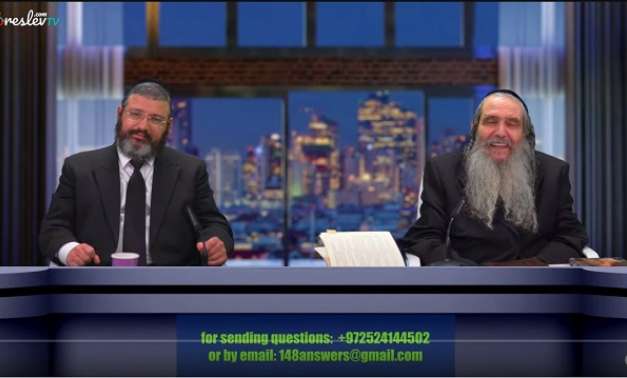
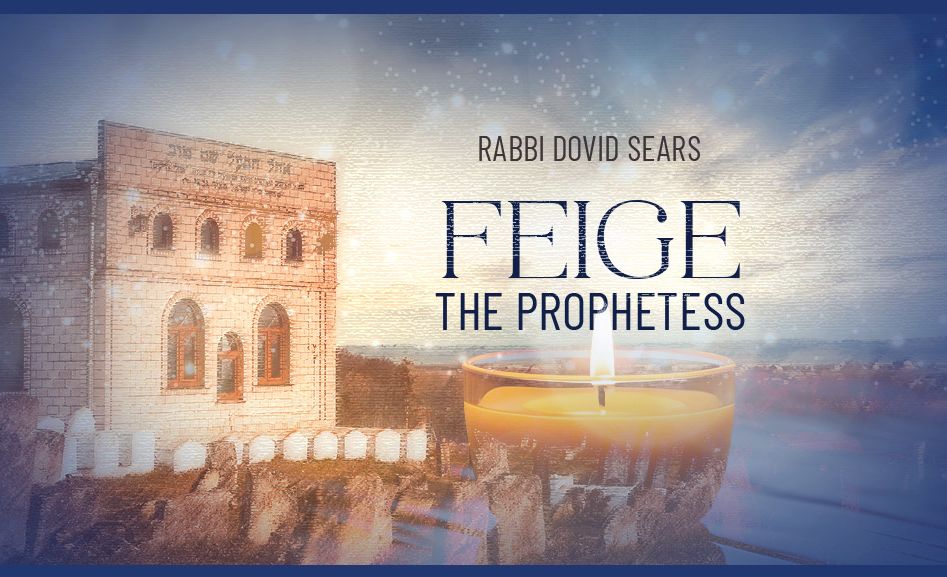

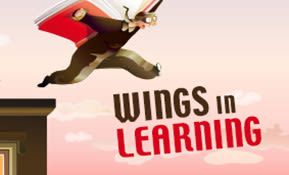

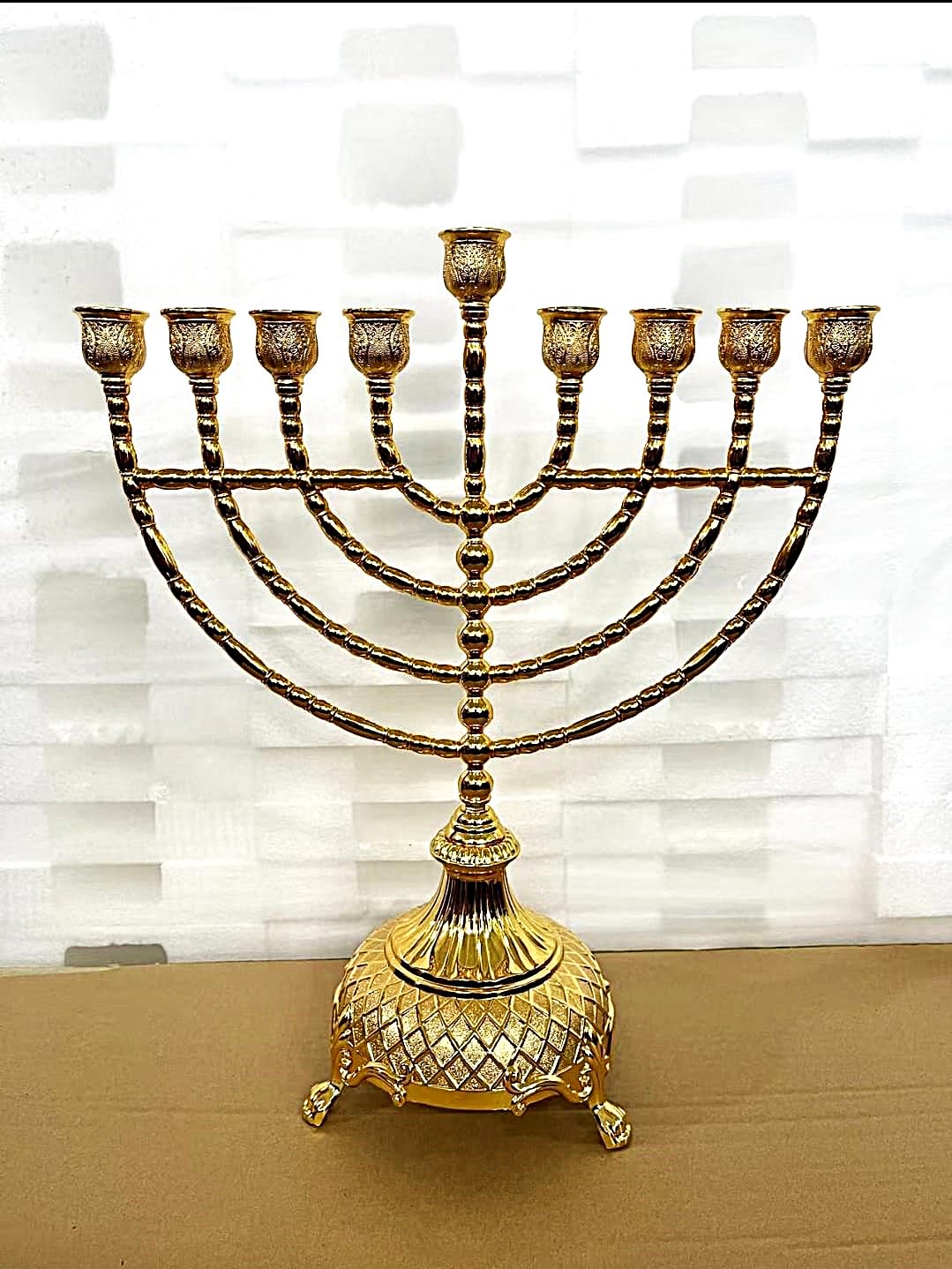
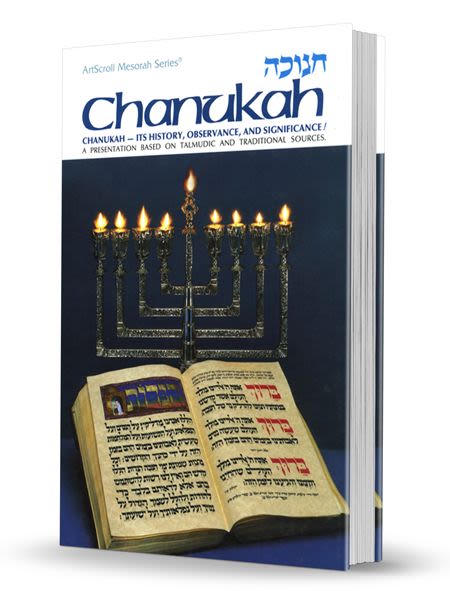
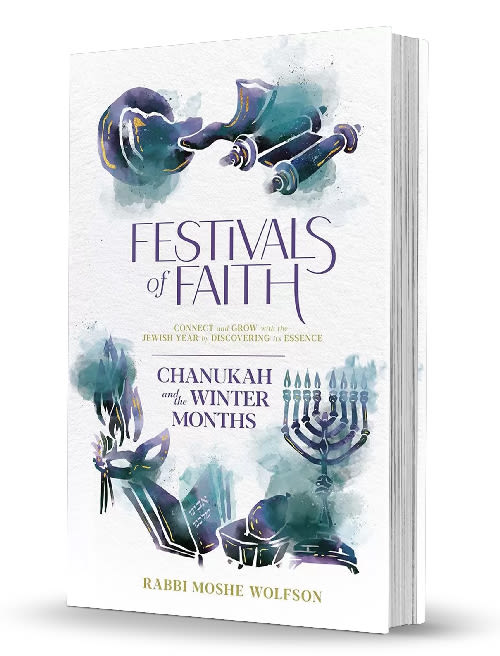
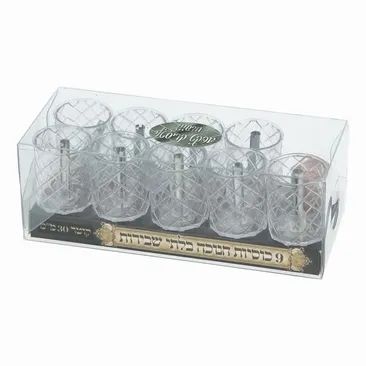
Tell us what you think!
Thank you for your comment!
It will be published after approval by the Editor.